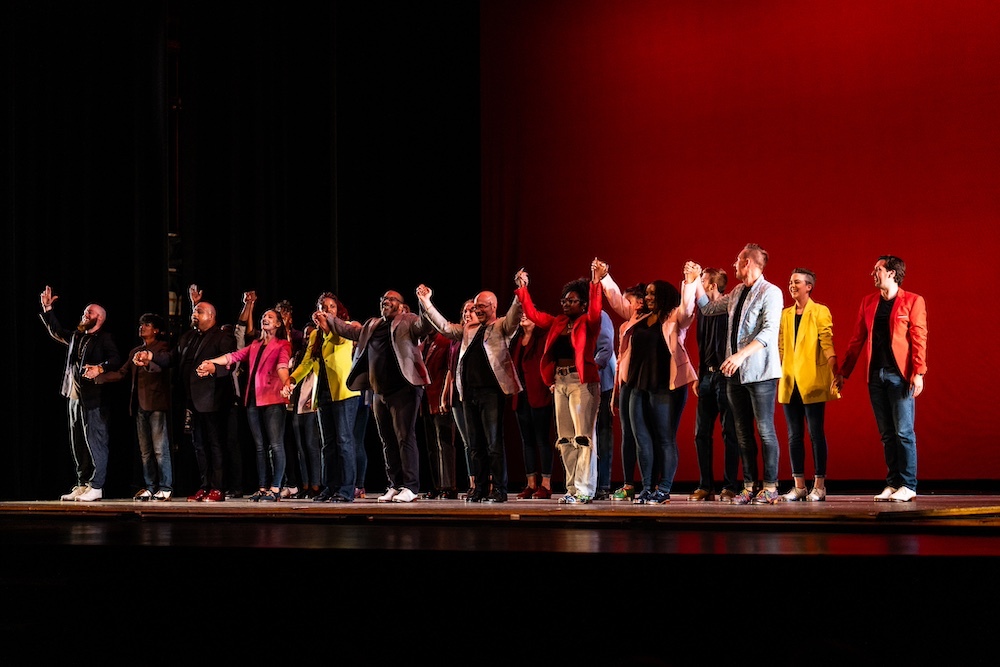
For the first time since 2011, Dance/USA’s National Conference is back in Chicago. As many as 350 dance artists, administrators, and other industry stakeholders will gather June 17–20 at the Palmer House Hilton and other venues including the Chicago Cultural Center and Roosevelt University. Keynote presenters include Ra Joy, former chief of staff at the National Endowment for the Arts; Marissa Lynn Jones, executive director of Driehaus Arts and Culture grantee League of Chicago Theatres; and Whitney Parnell, founder and CEO of Service Never Sleeps.
Organizing this biennial convening began immediately after the 2023 iteration in Atlanta, Georgia, and continued through a two-year period of rapid change and unanticipated challenges for arts nonprofits. Dance/USA executive director Kellee Edusei says that, during the conference planning process, “I was in a lot of conversations, hearing how artists weren’t even sure they wanted to continue making art and how they felt depleted,” in addition to “a lot of administrators feeling at or beyond capacity.”
Edusei and her colleagues looked for ways to address these issues within the “container” of the conference, she says, aligned with this year’s themes of accessibility, archives, disability justice, leadership development, technology, and tools to support a variety of dance practices. (Dance/USA will include tags for these themes alongside session descriptions, so attendees can easily create schedules aligned with their and their organizations’ priorities.) Edusei hopes that the “arc of experience” among attendees results in lasting impact for the field, in part by clarifying what “nourishment and sustainability really mean, from many vantage points.”
Those perspectives multiplied as member organizations embarked on journeys toward greater inclusion and authentic representation. In conversation with Edusei and fellow Driehaus Arts and Culture grantees Chicago Tap Theatre and Red Clay Dance Company, See Chicago Dance executive director Julia Mayer notes how use of the word “community” by nonprofit arts organizations has evolved. “It’s an easy word to throw around and to think that what I mean by ‘community’ is the same thing that you do.” See Chicago Dance is “trying to do as much as we can for as many dancing communities in the city as we can,” Mayer adds, not only in terms of “dance genres and cultural traditions” but also in consideration of Chicago’s “neighborhoods and socioeconomics.” The organization’s free, annual Chicago Dance Month programming continues through June.
Chicago Tap Theatre founder and artistic director Mark Yonally says that his organization’s definition of community includes four sets of stakeholders: its audience and students, its artists and staff members, Chicago’s Rogers Park neighborhood where the company is based, and Chicago Tap Allstars, an ongoing series of events produced in partnership with Bronzeville-based M.A.D.D. Rhythms and partially supported by a Driehaus Arts and Culture grant.
“Being able to look at our own people like a critical constituency that we have an obligation to has really made a difference in how we operate,” Yonally says. “I’d like to think that we’ve always operated with some of that mindset, but it has really changed how we’re applying for grants and has had some really positive impacts.”

Red Clay Dance Company’s In the Making program, supported by another type of Driehaus Arts and Culture grant, offers membership to artists and arts groups who use available studio time at the organization’s facility in the Woodlawn neighborhood. Because In the Making offers flexible terms — participants can pause and restart their memberships to reduce expenses during months they don’t need practice space — the program welcomes a wide variety of members. Each brings with them unique goals and needs, which Red Clay artistic director and CEO Vershawn Sanders-Ward says informs how additional support the program provides can be responsive and flexible, rather than generalized and rigid.
Current In the Making members include teachers and practitioners of kizomba, a genre of music and social dance with roots in Angola. While Red Clay typically presents choreography in a theatrical setting, hosting kizomba events “allowed me to see more of the fuller breadth of dance,” Sanders-Ward says, “and how our community views dance, as not just for performance or consumption, but as an embodiment of living.”
Sanders-Ward is one of three co-chairs of Dance/USA’s Chicago host committee, which comprises more than 20 local dance leaders including representatives from Driehaus Arts and Culture grantees Chicago Dancemakers Forum, Chicago Dance History Project, the Dance Center of Columbia College Chicago, See Chicago Dance, and The Era, a Chicago footwork collective.
As part of the selection of artists for Dance/USA performance showcases and Chicago Dance Month events, respectively, Sanders-Ward and Mayer agree that the curatorial process is an opportunity to put inclusive intentions into practice. (In both cases, more than 100 artists and groups responded to open calls for participation.) Chicago Dance Month 2025 marks the first time See Chicago Dance assembled a committee of seven diverse individuals, versus engaging one lead curator. “I feel like it was super successful,” Mayer says, “in terms of our goal to engage more communities and lift up more voices.”
Says Sanders-Ward, “What we were very specific about, and the main question that we asked was, ‘These are the opportunities to perform [during the Dance/USA conference]. Which opportunity best fits your work?’ We weren’t going to decide that. That was for you to decide as an artist.”
Learn more online about Dance/USA’s 2025 National Conference, Chicago Dance Month, Chicago Tap Allstars, and Red Clay Dance Company’s studio membership program, In the Making.


